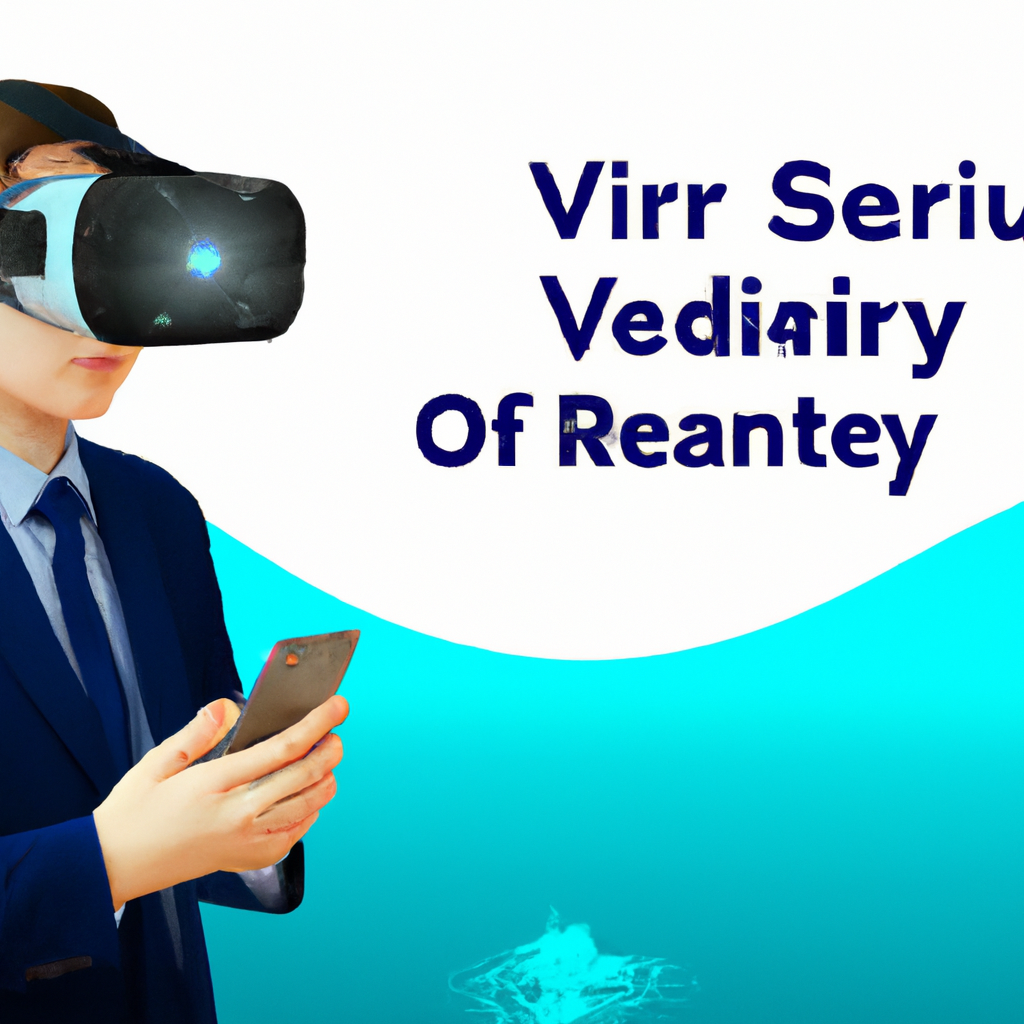작성자 정보
- dml0211 작성
- 작성일
컨텐츠 정보
- 5,395 조회
- 목록
본문

가상 현실(VR)은 해양 산업을 포함한 많은 산업에 혁명을 일으킬 잠재력을 가진 빠르게 성장하는 기술입니다. VR 기술은 선원들에게 바다와 해양 환경에 대한 현실적인 시뮬레이션을 제공함으로써 해양 산업의 항해와 안전을 향상시키는 데 사용될 수 있습니다. 이 기사에서는 항해와 안전을 개선하기 위해 VR 기술이 어떻게 사용되고 있는지에 대해 구체적으로 초점을 맞춰 해양 산업에서 VR 기술의 이점을 탐구할 것입니다.
해양 산업에서 VR 기술의 주요 이점 중 하나는 선원들에게 바다와 해양 환경에 대한 현실적인 시뮬레이션을 제공하는 데 사용될 수 있다는 것입니다. 이것은 선원들이 실제 상황에서 항해할 때 직면하게 될 조건을 더 잘 이해하는 데 도움이 될 수 있습니다. 예를 들어, VR 기술은 선박에 대한 바람, 파도 및 해류의 영향을 시뮬레이션하는 데 사용될 수 있으며, 선원들이 이러한 조건에서 항해하는 것을 연습하고 그들이 직면할 수 있는 도전에 더 익숙해질 수 있습니다.
해양 산업에서 VR 기술의 또 다른 이점은 그것이 안전성을 향상시키는 데 사용될 수 있다는 것입니다. 선원들을 훈련시키기 위해 VR 시뮬레이션을 사용함으로써, 그들은 화재나 사람이 배 밖에 있는 상황에 어떻게 대응하는지와 같은 비상 절차에 더 익숙해질 수 있습니다. 이것은 사고의 위험을 줄이고 해양 산업에서 일하는 사람들의 안전을 향상시키는데 도움을 줄 수 있습니다.

한국에서는 항해와 안전을 향상시키기 위해 이미 해양 산업에서 VR 기술이 사용되고 있습니다. 예를 들어, 한국해양대학교는 다양한 해양 환경과 조건을 시뮬레이션하는 선원들을 위한 VR 훈련 프로그램을 개발했습니다. 이 프로그램은 선원들이 항해 기술을 개발하고 실제 상황에서 항해할 때 직면할 수 있는 도전에 더 익숙해지도록 돕기 위해 고안되었습니다.
결론적으로, VR 기술은 항해와 안전을 개선함으로써 해양 산업에 혁명을 일으킬 가능성이 있습니다. 선원들에게 바다와 해양 환경에 대한 현실적인 시뮬레이션을 제공함으로써, VR 기술은 선원들이 항해할 때 직면할 조건을 더 잘 이해하고 비상 절차에 더 익숙해지도록 도울 수 있습니다. 한국에서는 VR 기술이 이미 해양 산업에서 사용되고 있으며, 그 잠재적인 이점이 실현되고 있습니다. VR 기술이 계속 발전함에 따라, 그것은 전 세계 선원들의 항해와 안전을 향상시키는 데 도움이 되는 해양 산업에서 그것의 사용이 훨씬 더 널리 퍼질 가능성이 있습니다.
해양 산업에서 VR 기술의 또 다른 이점은 선원들이 안전하고 통제된 환경에서 기술을 연습하고 연마할 수 있도록 한다는 것입니다. 이것은 실제 상황에서 항해할 자신이 아직 없는 미숙한 선원들에게 특히 중요합니다. VR 시뮬레이션을 사용함으로써, 그들은 경험을 쌓고 그들의 능력에 더 자신감을 가질 수 있고, 사고의 위험을 줄이고 안전을 향상시킬 수 있습니다.
VR 기술은 또한 선원들 간의 의사소통과 협업을 개선하는 데 사용될 수 있습니다. 예를 들어, VR 시뮬레이션은 비상 상황에 대응하거나 손상된 선박을 수리하는 것과 같은 문제를 해결하기 위해 선원들이 협력해야 하는 시나리오를 시뮬레이션하는 데 사용될 수 있습니다. 이것은 해양 산업에서 일하는 사람들의 안전을 보장하는 데 필수적인 팀워크와 의사소통 기술을 향상시키는데 도움을 줄 수 있습니다.

항해와 안전을 개선하는 것 외에도, VR 기술은 또한 해양 산업의 전반적인 효율성을 향상시키는 데 사용될 수 있습니다. 예를 들어, VR 시뮬레이션은 새로운 장비와 기술을 테스트하고 평가하는 데 사용될 수 있으므로 제조업체는 실제 상황에서 제품을 사용하기 전에 개선하고 제품을 최적화할 수 있습니다. 이를 통해 장비 고장 위험을 줄이고 해양 산업의 전반적인 신뢰성을 향상시킬 수 있습니다.
요약하자면, VR 기술은 해양 산업에서 항해와 안전을 개선하는 데 큰 역할을 할 수 있는 잠재력을 가지고 있습니다. 선원들에게 바다와 해양 환경에 대한 현실적인 시뮬레이션을 제공함으로써, VR 기술은 선원들이 항해할 때 직면할 조건을 더 잘 이해하고, 비상 절차에 더 익숙해지고, 전반적인 기술과 자신감을 향상시키는 데 도움을 줄 수 있습니다. 한국에서는 VR 기술이 이미 해양 산업에서 사용되고 있으며, 그 잠재적인 이점이 실현되고 있습니다. VR 기술이 계속 발전함에 따라, 그것은 전 세계 선원들의 항해와 안전을 향상시키는 데 도움이 되는 해양 산업에서 그것의 사용이 훨씬 더 널리 퍼질 가능성이 있습니다.
Virtual Reality (VR) is a rapidly growing technology that has the potential to revolutionize many industries, including the marine industry. VR technology can be used to improve navigation and safety in the marine industry by providing sailors with a realistic simulation of the sea and ocean environment. In this article, we will explore the benefits of VR technology in the marine industry, with a specific focus on how it is being used to improve navigation and safety.
One of the key benefits of VR technology in the marine industry is that it can be used to provide sailors with a realistic simulation of the sea and ocean environment. This can help sailors to better understand the conditions they will face when navigating in real-life situations. For example, VR technology can be used to simulate the effects of wind, waves, and currents on a vessel, allowing sailors to practice navigating in these conditions and become more familiar with the challenges they may face.
Another benefit of VR technology in the marine industry is that it can be used to improve safety. By using VR simulations to train sailors, they can become more familiar with emergency procedures, such as how to respond to a fire or a man overboard situation. This can help to reduce the risk of accidents and improve the safety of those working in the marine industry.
In Korea, VR technology is already being used in the marine industry to improve navigation and safety. For example, the Korea Maritime and Ocean University (KMOU) has developed a VR training program for sailors, which simulates various marine environments and conditions. The program is designed to help sailors develop their navigation skills and become more familiar with the challenges they may face when navigating in real-life situations.
In conclusion, VR technology has the potential to revolutionize the marine industry by improving navigation and safety. By providing sailors with a realistic simulation of the sea and ocean environment, VR technology can help sailors to better understand the conditions they will face when navigating and become more familiar with emergency procedures. In Korea, VR technology is already being used in the marine industry, and its potential benefits are being realized. As VR technology continues to advance, it is likely that its use in the marine industry will become even more widespread, helping to improve navigation and safety for sailors around the world.
Another benefit of VR technology in the marine industry is that it allows sailors to practice and hone their skills in a safe and controlled environment. This is especially important for inexperienced sailors who may not yet have the confidence to navigate in real-life situations. By using VR simulations, they can gain experience and become more confident in their abilities, reducing the risk of accidents and improving safety.
VR technology can also be used to improve communication and collaboration among sailors. For example, VR simulations can be used to simulate scenarios where sailors must work together to solve a problem, such as responding to an emergency or repairing a damaged vessel. This can help to improve teamwork and communication skills, which are essential for ensuring the safety of those working in the marine industry.
In addition to improving navigation and safety, VR technology can also be used to improve the overall efficiency of the marine industry. For example, VR simulations can be used to test and evaluate new equipment and technologies, allowing manufacturers to make improvements and optimize their products before they are used in real-life situations. This can help to reduce the risk of equipment failure and improve the overall reliability of the marine industry.
In summary, VR technology has the potential to play a major role in improving navigation and safety in the marine industry. By providing sailors with a realistic simulation of the sea and ocean environment, VR technology can help sailors to better understand the conditions they will face when navigating, become more familiar with emergency procedures, and improve their overall skills and confidence. In Korea, VR technology is already being used in the marine industry, and its potential benefits are being realized. As VR technology continues to advance, it is likely that its use in the marine industry will become even more widespread, helping to improve navigation and safety for sailors around the world.







